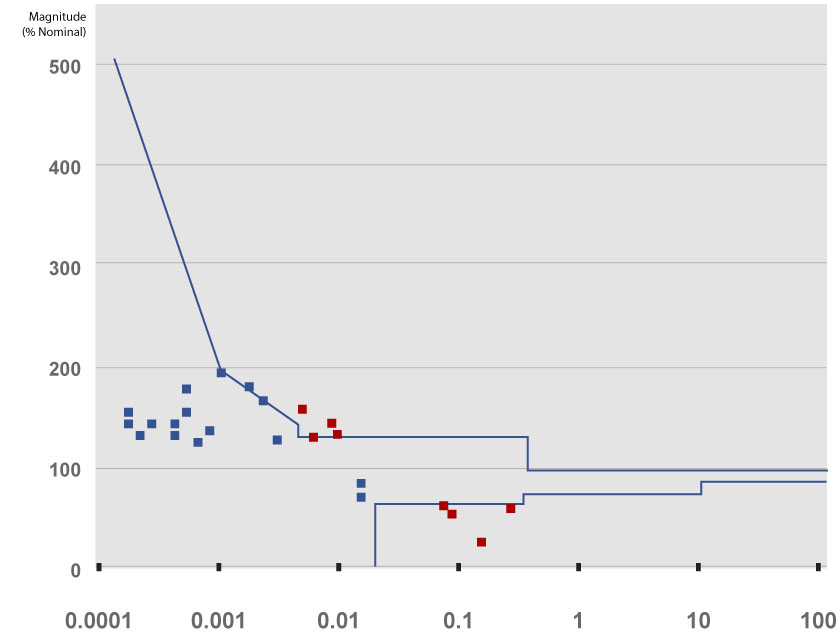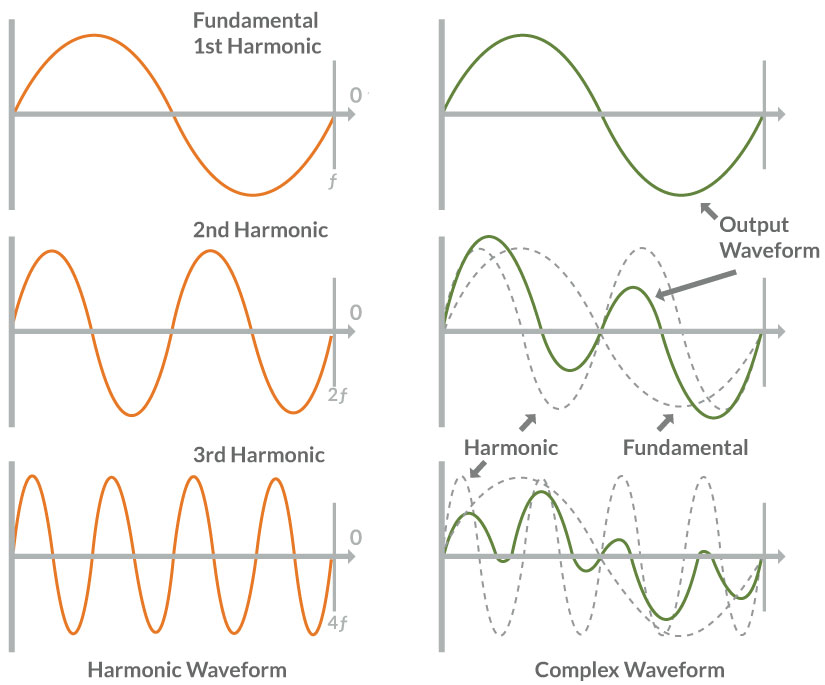Power Conditioning Equipment
The first full feature AC power distribution system in the United States was built in Great Barrington, Massachusetts in 18861. The entire Great Barrington “grid” stretched a grand total of three quarters of a mile and eventually served 7 offices, 2 hotels and 13 stores on Main Street. Since then, our electric system has grown to power most of America and has become such an integral part of our lives that electric power is something we don’t think much about until it’s disrupted for one reason or another. And although the grid has become extremely reliable, the sheer size and scale of the system creates limits on the power quality that can be achieved. JEA has over 6,500 miles of distribution lines that serve our customers and these lines can be affected by events such as weather, vegetation encroachment, animals, equipment failure, accidents and many other types of events. When the utility distribution lines are affected you may notice it at your business.
Below is a CBEMA- ITIC graph of all the power quality events that occurred on JEA’s electric distribution system on a calm and clear day. Imagine how many occur throughout the year.

Most of us clearly understand power outages and can easily recognize that not having power will impact your business. However, power outages are relatively rare because of technological advances and the grid’s design. What’s less understood are the more common short term events, which typically last less than a second, but can still have an impact on your equipment and business operations. Technological advances in controls and drive systems have increased productivity and efficiency for businesses, however, these systems have become very sensitive and vulnerable to voltage fluctuations. If your equipment is unable to manage these events, you should consider investing in power conditioning equipment that can help minimize these impacts and improve business productivity and performance.
Voltage Sags and Surges
Voltage sags are the most common form of power quality events. A sag is a 10% to 90% drop in RMS voltage for eight milliseconds to one minute in duration. Most voltage sags occur in less than a second and are really only noticed if you happen to notice the lights flicker and many times you may not even see that. However, your equipment may have felt the sag, causing a disruption in your processes. According to the Electric Power Research Institute, sags account for 93% of power quality events and the average facility experiences sixty six sags per year. Variable frequency drives and programmable logic controllers are common pieces of equipment that are sensitive to voltage sags, but many electronically controlled motors and devices can be as well. It’s good practice to check the control settings to ensure they’re set properly and are matched with the utility’s voltage tolerances. In some cases, the sag is not utility driven, but caused by facility equipment starting at the same time, resulting in a voltage sag at the facility’s internal distribution system. Ensuring that larger equipment starts in a proper sequence or has start support equipment can help alleviate that.
Sags not only have a financial impact due to loss of production time, material waste and customer satisfaction issues, but they can also damage and reduce the life of equipment. In turn, this may increase O&M costs. During the sag event, there is a momentary inrush of current to the equipment that generates heat. Over time, this can lead to premature failure. This is where sag mitigation or “ride through” devices can help and there are a number of different types on the market. Uninterruptible power supplies (UPS’s), flywheels, dynamic voltage restorers (DVR’s) and static var compensators (SVC’s) are of the most common devices. Some of these can be combined with energy storage devices like batteries to increase the sag protection, but that also comes at a higher cost.
The opposite of a sag is a voltage surge, or spike, and they do occur here in the lightning capital of the world. There are a number of devices that can be installed to protect the equipment from these momentary voltage spikes. Voltage and current clamping devices such as TVSS, filters, isolation transformers and line and load chokes and reactors can all help. Perform a cost benefit analysis to determine the best type of protection for your equipment.
Reactive load and Harmonic Distortion
Reactive power is the portion of electricity that establishes and sustains the electric and magnetic fields of alternating-current equipment. Reactive power must be supplied to most types of magnetic equipment, such as motors and transformers. The amount of reactive power (load) a facility uses is typically defined by its “power factor”. A power factor of one means that the facility has no reactive load. As reactive load increases, the power factor drops and most utilities in Florida will begin charging a facility with a poor power factor, which is typically defined as less than 0.9. Most facilities don’t have issues with low power factor but for larger commercial customers, with large or numerous motors or arc welding machines, it can be an issue. By installing power factor correction equipment those extra costs are eliminated and with the right equipment, harmonics and line voltage issues can be addressed as well. The intent of these systems is to provide cleaner, more stable power to the end loads.
Harmonic distortion, typically just called harmonics, are voltage and current distortions at frequencies that are multiples of the fundamental (base) frequency, which is 60 Hertz in the US. Consider a nice calm day at the beach with clean lines of waves coming in to surf. Now consider what the ocean looks like during a windy northeaster and the waves are coming from all directions. Surfers call this a “washing machine” and that’s what harmonics does to the electric distribution system. These fluctuations in voltage and current on the facility’s distribution system can cause problems for equipment and correcting for harmonics can help optimize the life of equipment. Line chokes and reactors and filters are the most common type of harmonics correction devices, but there are many solutions available. The application should be designed and selected to fit the facility’s particular issues and needs.

What Can You Do?
The first step is to evaluate and research the root cause of events and recognize that some type of power conditioning equipment may be necessary and valuable to your facility. Sometimes it is easy to recognize when processes shut down and the impacts are clearly evident. Other times, it may not be as clear. Everything seems fine, but you are losing a lot of motor drive relays, or motors and controllers aren’t lasting as long as they should and it just doesn’t seem right. These symptoms are indicative of power quality issues, but there’s no smoking gun to prove it. For any of these events, it is good practice to keep detailed logs of what occurred, the date and time and the total cost of the event to the business.
The next step is to install power quality monitoring equipment at the facility to paint a picture of what’s happening on the facility’s electric power system. By doing this, the power quality data may clearly indicate the power quality issue. The customer must also be cognizant of the location the metering device is installed to understand what equipment the device is monitoring. The power quality (PQ) data is critical information needed to design the power conditioning equipment that will solve the issues you’re experiencing. There are temporary portable devices available as well as fixed systems. In the grand scheme of things, power quality metering is quite inexpensive compared to the value it can provide to operations and maintenance costs. Or, you can hire a power quality consultant and have them perform the analysis on the system and provide some guidance on the problems and the potential solutions.
The final step will be to design the system and get the capital budget for it. This can be a challenging part of the PQ project improvement process since budgets may be tight. It is critical to evaluate all performance data in an effort to create a strong
business case for management to approve the project(s). That’s why keeping detailed logs of all events is so critical. They provide the information needed to determine the ROI of the upgrades and get the capital necessary for the project.
1Source:
www.edisontechcenter.org
Related Links
-
Electric Systems
JEA is proud of its Electric System and its reputation as one of the nation’s exemplary municipal service providers. Our existing generation capacity is 3,747 MWs and our generation fleet contains a diverse resource mix.
-
Reliability
JEA works hard to provide reliable services in an environmentally friendly way at a fair price.
-
Small Business Hub
We partner with you to create custom combinations of tech products and services that drive the outcomes your business needs. * {box-sizing: border-box;} body {font-family: Verdana, sans-serif;} .mySlides {display: none;} img {vertical-align: middle;} /* On smaller screens, decrease text size */ @media only screen and (max-width: 300px) { .text {font-size: 11px} } /* jhljkhjkhlkhlkjhkljhkjhlkjhklh */ * { box-sizing: border-box; } body { font-family: Arial, Helvetica, sans-serif; } /* Float four columns side by side */ .column { float: left; width: 25%; padding: 0 10px; } /* Remove extra left and right margins, due to padding */ .row {margin: 0 -5px;} /* Clear floats after the columns */ .row:after { content: ""; display: table; clear: both; } /* Responsive columns */ @media screen and (max-width: 600px) { .column { width: 100%; display: block; margin-bottom: 20px; } } /* Style the counter cards */ .card { box-shadow: 0 4px 8px 0 rgba(0, 0, 0, 0.2); padding: 16px; text-align: center; background-color: #f1f1f1; } Solutions tailored to fit your business... We partner with you to create custom combinations of tech products and services that drive the outcomes your business needs. Small Business We put the power of our team & infrastructure behind a range of solutions that are specially designed to help small businesses thrive. Enterprise & medium business We meet your organization on its own terms, with solutions tailored to pair seamlessly with your existing systems Public Sector We provide specialized expertise in designing custom solutions to integrate with legacy infrastructure and navigate complex regulations.. Partner Solutions Partner with JEA to deliver robust and reliable utility solutions to solve your challenges. -->